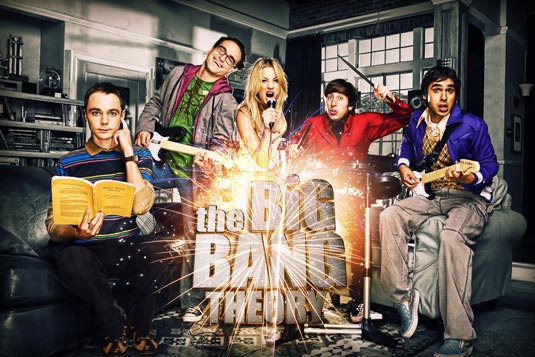
As we all know, creating a movie isn't easy at all, and sometimes the continuity of it can be a real pain in the neck. Earlier, especially in times when there was no post-processing on the computers and when they had to completely shoot an entire movie without any saved visuals to help them remember the setting or the look of characters the next day, this was even more complicated (another reason why I prefer older movies) – the crew had only themselves to rely on.
The only piece of tech was a non-digital camera, from which they couldn't take the tape out until it came to the end. So, no reminders. It is exactly at those times that the continuity system was invented, and also an editing position for a person who would sort through all of the material in order to get that continuity into place.
Taken from ‘Film Lexicon' by Peter Donaldson, the definition for the continuity system is as follows:
“A highly standardized system of editing, now virtually universal in commercial film and television but originally associated with Hollywood cinema, that matches spatial and temporal relations from shot to shot in order to maintain continuous and clear narrative action.
Generally speaking, the continuity system aims to present a scene so that the editing is ‘invisible' (not consciously noticed by the viewer) and the viewer is never distracted by awkward jumps between shots or by any confusion about the spatial lay-out of the scene.
Classical editing achieves a ‘smooth' and ‘seamless' style of NARRATION, both because of its conventionality (it is ‘invisible' in part because we are so used to it) and because it employs a number of powerful techniques designed to maximize a sense of spatial and temporal continuity.”
Now, why did I make such a long introduction? Well, the subject of this article is exactly the discontinuity, a.k.a. movie mistakes a.k.a. ‘bloopers' – which the nitpicky movie fans are sooo keen on searching for – and we plan to introduce some of them from time to time.
This time, they are from the lovable, geeky, science-themed sitcom,
The Big Bang Theory, starring
Johnny Galecki,
Jim Parsons,
Kaley Cuoco,
Simon Helberg and
Kunal Nayyar, and created by
Chuck Lorre and
Bill Prady. I wouldn't call these the fifteen
biggest mistakes (since it's a science-themed show, the biggest mistake would be to have script/dialogue issues with the known science facts, to my opinion, more than only slight discontinuity) but who's counting. Oh, right. You are.
Well, the fact is, no matter how many dollars are invested into a movie, this kind of mistakes will always happen, simply because a person is not a machine and it can always happen that some mistakes are overlooked.
So don't be too harsh, dear movie fans, and here, have a look:
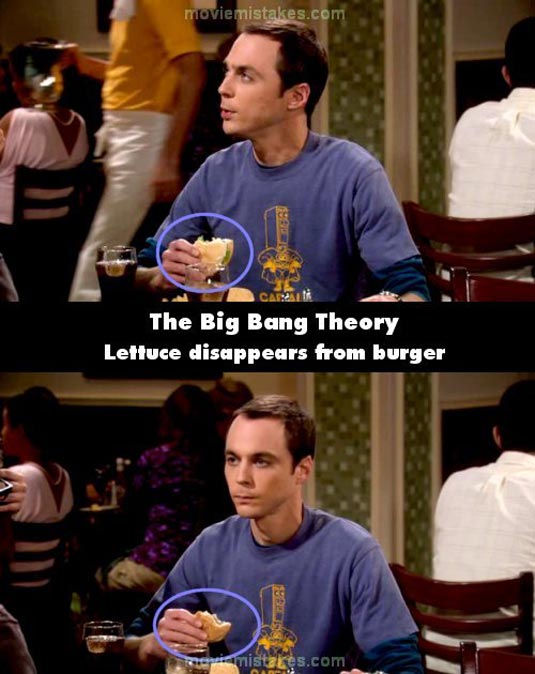
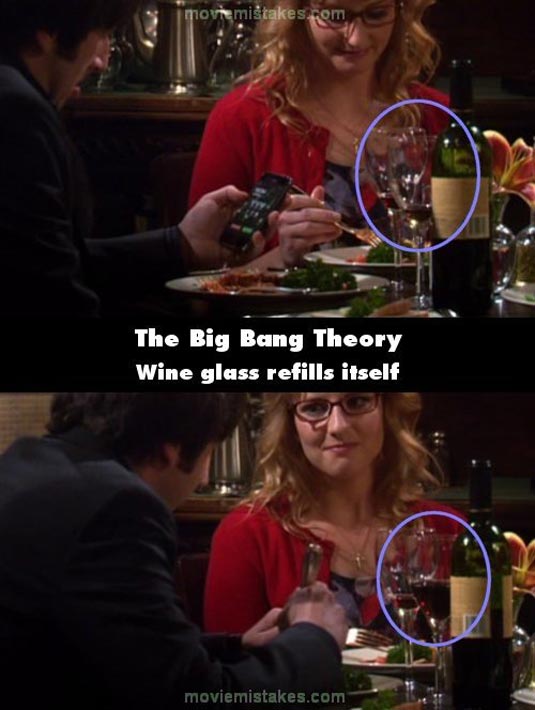
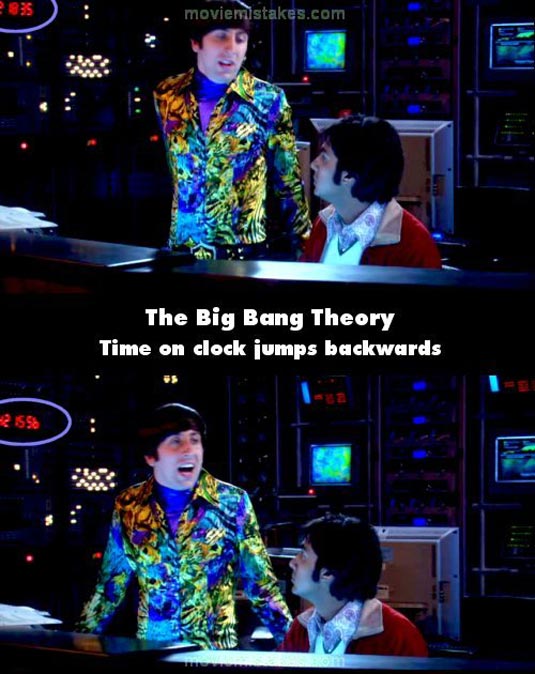
For the rest of them, go
here. And don't let that these mistakes avert you from watching the show (if you already don't watch it), because it really is enjoyable.
 As we all know, creating a movie isn't easy at all, and sometimes the continuity of it can be a real pain in the neck. Earlier, especially in times when there was no post-processing on the computers and when they had to completely shoot an entire movie without any saved visuals to help them remember the setting or the look of characters the next day, this was even more complicated (another reason why I prefer older movies) – the crew had only themselves to rely on.
The only piece of tech was a non-digital camera, from which they couldn't take the tape out until it came to the end. So, no reminders. It is exactly at those times that the continuity system was invented, and also an editing position for a person who would sort through all of the material in order to get that continuity into place.
Taken from ‘Film Lexicon' by Peter Donaldson, the definition for the continuity system is as follows:
“A highly standardized system of editing, now virtually universal in commercial film and television but originally associated with Hollywood cinema, that matches spatial and temporal relations from shot to shot in order to maintain continuous and clear narrative action.
Generally speaking, the continuity system aims to present a scene so that the editing is ‘invisible' (not consciously noticed by the viewer) and the viewer is never distracted by awkward jumps between shots or by any confusion about the spatial lay-out of the scene.
Classical editing achieves a ‘smooth' and ‘seamless' style of NARRATION, both because of its conventionality (it is ‘invisible' in part because we are so used to it) and because it employs a number of powerful techniques designed to maximize a sense of spatial and temporal continuity.”
Now, why did I make such a long introduction? Well, the subject of this article is exactly the discontinuity, a.k.a. movie mistakes a.k.a. ‘bloopers' – which the nitpicky movie fans are sooo keen on searching for – and we plan to introduce some of them from time to time.
This time, they are from the lovable, geeky, science-themed sitcom, The Big Bang Theory, starring Johnny Galecki, Jim Parsons, Kaley Cuoco, Simon Helberg and Kunal Nayyar, and created by Chuck Lorre and Bill Prady. I wouldn't call these the fifteen biggest mistakes (since it's a science-themed show, the biggest mistake would be to have script/dialogue issues with the known science facts, to my opinion, more than only slight discontinuity) but who's counting. Oh, right. You are.
Well, the fact is, no matter how many dollars are invested into a movie, this kind of mistakes will always happen, simply because a person is not a machine and it can always happen that some mistakes are overlooked.
So don't be too harsh, dear movie fans, and here, have a look:
As we all know, creating a movie isn't easy at all, and sometimes the continuity of it can be a real pain in the neck. Earlier, especially in times when there was no post-processing on the computers and when they had to completely shoot an entire movie without any saved visuals to help them remember the setting or the look of characters the next day, this was even more complicated (another reason why I prefer older movies) – the crew had only themselves to rely on.
The only piece of tech was a non-digital camera, from which they couldn't take the tape out until it came to the end. So, no reminders. It is exactly at those times that the continuity system was invented, and also an editing position for a person who would sort through all of the material in order to get that continuity into place.
Taken from ‘Film Lexicon' by Peter Donaldson, the definition for the continuity system is as follows:
“A highly standardized system of editing, now virtually universal in commercial film and television but originally associated with Hollywood cinema, that matches spatial and temporal relations from shot to shot in order to maintain continuous and clear narrative action.
Generally speaking, the continuity system aims to present a scene so that the editing is ‘invisible' (not consciously noticed by the viewer) and the viewer is never distracted by awkward jumps between shots or by any confusion about the spatial lay-out of the scene.
Classical editing achieves a ‘smooth' and ‘seamless' style of NARRATION, both because of its conventionality (it is ‘invisible' in part because we are so used to it) and because it employs a number of powerful techniques designed to maximize a sense of spatial and temporal continuity.”
Now, why did I make such a long introduction? Well, the subject of this article is exactly the discontinuity, a.k.a. movie mistakes a.k.a. ‘bloopers' – which the nitpicky movie fans are sooo keen on searching for – and we plan to introduce some of them from time to time.
This time, they are from the lovable, geeky, science-themed sitcom, The Big Bang Theory, starring Johnny Galecki, Jim Parsons, Kaley Cuoco, Simon Helberg and Kunal Nayyar, and created by Chuck Lorre and Bill Prady. I wouldn't call these the fifteen biggest mistakes (since it's a science-themed show, the biggest mistake would be to have script/dialogue issues with the known science facts, to my opinion, more than only slight discontinuity) but who's counting. Oh, right. You are.
Well, the fact is, no matter how many dollars are invested into a movie, this kind of mistakes will always happen, simply because a person is not a machine and it can always happen that some mistakes are overlooked.
So don't be too harsh, dear movie fans, and here, have a look:


 For the rest of them, go here. And don't let that these mistakes avert you from watching the show (if you already don't watch it), because it really is enjoyable.
For the rest of them, go here. And don't let that these mistakes avert you from watching the show (if you already don't watch it), because it really is enjoyable.
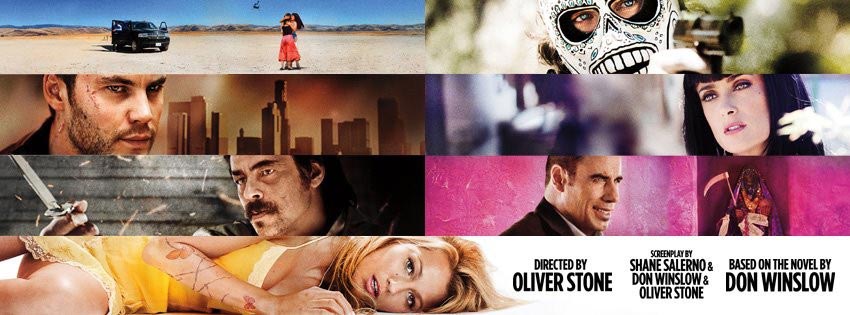
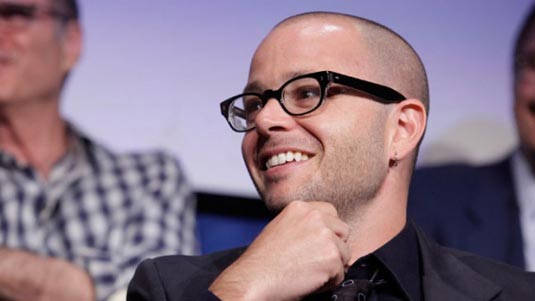


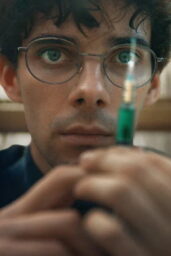

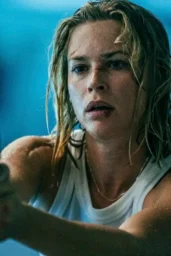
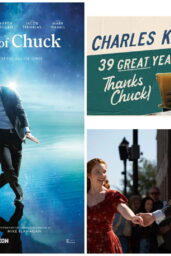
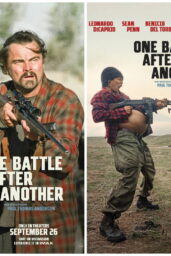
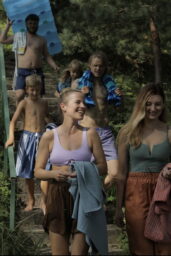
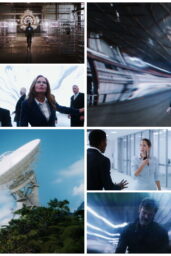
Science lapse (Linguistics): In The Gorilla Experiment (Season 3, Ep 10), Leonard says “The more the merrier” to which Sheldon replies “That’s a false equivalency. More does not equal merry”. Actually this clause and similar ones with this structure are not equivalencies, they are correlatives with the syntactic structure of the Anglo-Saxon instrumental case, though the case markings are lost. An analytical rendering would be “by this much more, by this much merrier” (correlate), not “the more is the merrier” (equivalent).
I could be wrong, but the episode where Sheldon continues to see Penny after she breaks up with Leonard, and he goes to her house to eat spaghetti with hot dogs When Howard leaves at the same time that Sheldon is trying to go over to Penny’s apartment, and he is forced to go outside and say goodbye to Howard: Howard says goodbye to Sheldon, and then Sheldon says TO HOWARD (and this is not verbatim: “Goodbye, SHEL — have a nice scoot.” He doesn’t say goodbye to Howard.
that’s what I heard too. A flub by Jim Parsons
Sheldon say ” I shall”, and not “Goodbye, Shel”
Sheldon say ” I shall, and not Goodbye Shel